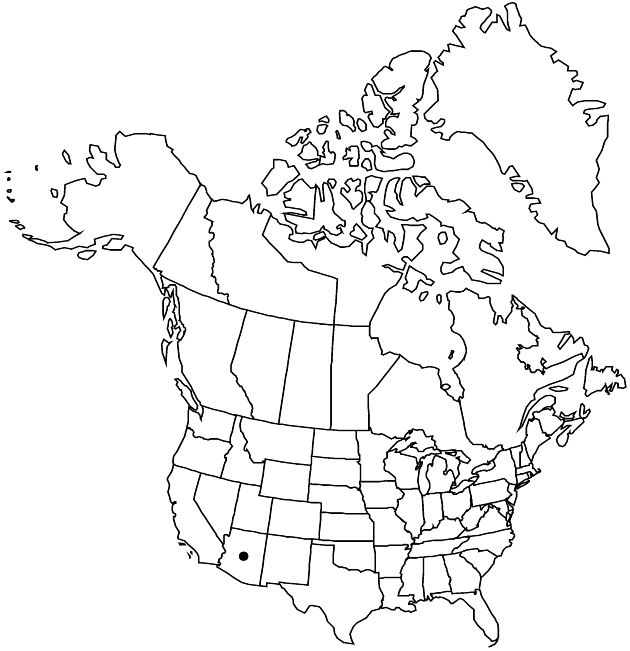Difference between revisions of "Perityle congesta"
SouthW. Naturalist 4: 204. 1959.
FNA>Volume Importer |
imported>Volume Importer |
||
| (6 intermediate revisions by 2 users not shown) | |||
| Line 8: | Line 8: | ||
}} | }} | ||
|common_names=Kaibab or Grand Canyon rock daisy | |common_names=Kaibab or Grand Canyon rock daisy | ||
| − | |basionyms={{Treatment/ID/ | + | |special_status={{Treatment/ID/Special_status |
| + | |code=F | ||
| + | |label=Illustrated | ||
| + | }}{{Treatment/ID/Special_status | ||
| + | |code=E | ||
| + | |label=Endemic | ||
| + | }}{{Treatment/ID/Special_status | ||
| + | |code=C | ||
| + | |label=Conservation concern | ||
| + | }} | ||
| + | |basionyms={{Treatment/ID/Basionym | ||
|name=Laphamia congesta | |name=Laphamia congesta | ||
|authority=M. E. Jones | |authority=M. E. Jones | ||
| + | |rank=species | ||
| + | |publication_title=Proc. Calif. Acad. Sci., ser. | ||
| + | |publication_place=2, 5: 703. 1895 | ||
}} | }} | ||
|synonyms= | |synonyms= | ||
| Line 28: | Line 41: | ||
|distribution=Ariz. | |distribution=Ariz. | ||
|discussion=<p>Of conservation concern.</p><!-- | |discussion=<p>Of conservation concern.</p><!-- | ||
| − | --><p>The leaf blades of Perityle congesta usually have a tooth on each margin, cuneate bases, and unobtrusive veins abaxially; those of P. tenella usually have serrate margins, truncate bases, and raised veins abaxially. Perityle congesta is found on both rims and extending into the Grand Canyon and northward almost to the Utah border. Available specimens suggest that P. congesta and P. tenella intergrade where their ranges overlap in northwestern Arizona on the Colorado Plateau. Specimens from the Colorado Plateau have intermediate leaf shapes and induments.</p> | + | --><p>The leaf blades of <i>Perityle congesta</i> usually have a tooth on each margin, cuneate bases, and unobtrusive veins abaxially; those of <i>P. tenella</i> usually have serrate margins, truncate bases, and raised veins abaxially. <i>Perityle congesta</i> is found on both rims and extending into the Grand Canyon and northward almost to the Utah border. Available specimens suggest that <i>P. congesta</i> and <i>P. tenella</i> intergrade where their ranges overlap in northwestern Arizona on the Colorado Plateau. Specimens from the Colorado Plateau have intermediate leaf shapes and induments.</p> |
|tables= | |tables= | ||
|references= | |references= | ||
| Line 37: | Line 50: | ||
-->{{#Taxon: | -->{{#Taxon: | ||
name=Perityle congesta | name=Perityle congesta | ||
| − | |||
|authority=(M. E. Jones) Shinners | |authority=(M. E. Jones) Shinners | ||
|rank=species | |rank=species | ||
| Line 51: | Line 63: | ||
|publication title=SouthW. Naturalist | |publication title=SouthW. Naturalist | ||
|publication year=1959 | |publication year=1959 | ||
| − | |special status= | + | |special status=Illustrated;Endemic;Conservation concern |
| − | |source xml=https:// | + | |source xml=https://bitbucket.org/aafc-mbb/fna-data-curation/src/2e0870ddd59836b60bcf96646a41e87ea5a5943a/coarse_grained_fna_xml/V19-20-21/V21_819.xml |
|tribe=Asteraceae tribe Heliantheae | |tribe=Asteraceae tribe Heliantheae | ||
|subtribe=Asteraceae (tribe Heliantheae) subtribe Peritylinae | |subtribe=Asteraceae (tribe Heliantheae) subtribe Peritylinae | ||
Latest revision as of 21:14, 5 November 2020
Perennials or subshrubs, 10–30(–45) cm (densely clumped, stems spreading or pendent); hirtellous. Leaves: petioles 2.5–10(–15) mm (shorter than blades); blades elliptic, lanceolate, or ovate, 5–17(–20) × 4–8(–10) mm, (bases cuneate) margins usually entire or with 2(–6) teeth. Heads borne singly or (2–8) in corymbiform arrays, 5–6(–6.5) × 3.5–4.5(–5) mm. Peduncles 3–17 mm. Involucres campanulate. Phyllaries 12–16, narrowly lanceolate, oblong-lanceolate, or lanceolate, 3.2–4.5 × 0.8–1.4 mm. Ray florets 0. Disc florets 30–40; corollas yellow, tubes 0.8–1 mm, throats tubular to subfunnelform, 1.2–1.5 mm, lobes 0.3–0.5 mm. Cypselae narrowly oblanceolate, (2–)2.5–3 mm,margins thin-calloused, short-hairy; pappi of 1–2 subequal or unequal bristles 2–2.7 mm. 2n = 32.
Phenology: Flowering spring–fall.
Habitat: Crevices of limestone cliffs and bluffs
Elevation: 900–2700 m
Discussion
Of conservation concern.
The leaf blades of Perityle congesta usually have a tooth on each margin, cuneate bases, and unobtrusive veins abaxially; those of P. tenella usually have serrate margins, truncate bases, and raised veins abaxially. Perityle congesta is found on both rims and extending into the Grand Canyon and northward almost to the Utah border. Available specimens suggest that P. congesta and P. tenella intergrade where their ranges overlap in northwestern Arizona on the Colorado Plateau. Specimens from the Colorado Plateau have intermediate leaf shapes and induments.
Selected References
None.

